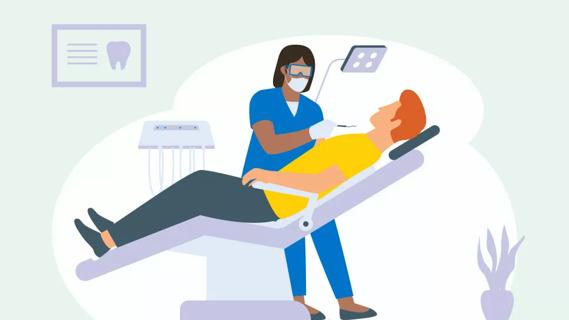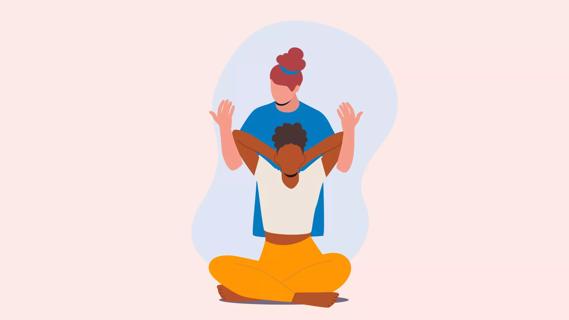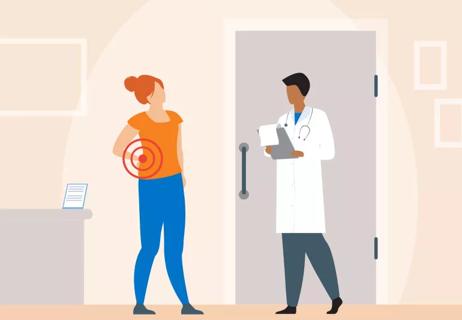Expert insights about what to expect

Constant pain is not just a battle for patients, it can be a completely debilitating condition. But for many people who suffer from severe pain, nerve blocks have become a core part of their treatment.
Cleveland Clinic is a non-profit academic medical center. Advertising on our site helps support our mission. We do not endorse non-Cleveland Clinic products or services. Policy
These injections of local anesthetic and steroids directly to the area of the affected nerve can help with pain control and improve function and quality of life Often, the goal is to help people avoid surgery and to take an active role in physical therapy.
Injections are also used as a diagnostic tool. Injection to a specific targeted area or nerves can help to determine the location and source of the pain. This helps to specifically target an area to treat and also helps to guide the location of the procedure.
Pain management specialist Paul Shin, MD, offers insights for patients considering having a nerve block. While your health care provider will ultimately help you determine the best procedure for the pain you have, here are four things to expect if you have a nerve block.
Patients are often hesitant when it comes to needles, Dr. Shin says. “Some procedures for arthritic conditions may involve up to six needles,” he adds, “but most procedures are well tolerated and brief, generally lasting 5 to 15 minutes. A local anesthetic to the injection site minimizes the needle pain and IV sedation can help to decrease anxiety to overall make the procedure comfortable.”
A fluoroscope, or low-powered X-ray, allows whoever administers the nerve block to visualize the bony structures. This enables accurate placement of the needle and reduces complications. Overall, this technique will accurately place the injection to a precise location with minimal pain.
For some people, a nerve block gives immediate relief. For others, it takes a series of injections before it helps ease the pain. “It’s very unpredictable because pain is a personal perception and everyone responds differently,” Dr. Shin says.
Also, if you have had chronic pain for 10 or more years, it could involve multiple pain generators. There are many anatomic structures and the pain could come from more than one joint or nerve.
In the spine, it’s possible that your first injection may be diagnostic. Based on the response of the injection, further injections, a different approach or different levels can be performed. Ultimately, the goal is to identify the source of pain, to improve function and avoid surgery.
This also means that the sooner you can get an injection before your pain becomes chronic, the better your result. And injections are typically combined with other forms of treatment such as physical therapy to increase your chances of getting better.
You can expect some post-procedure discomfort or soreness that will also improve within days of the injection. The local anesthetic doesn’t last long and for some people, it may take a while for the steroid to work and provide a long-term benefit.
The peak effect of the steroid will usually be between 3 and 10 days. “It’s slowly released into the body, and for some people, there is an interval before you start to feel the improvement,” Dr. Shin explains. Your response to the first injection helps guide your health care provider about future treatments as they work to pinpoint the nerve that is causing your pain.
Based on your medical history and physician preferences, injections can be repeated. Your health care provider will determine the exact number of injections that you can receive. Medical conditions, such as diabetes, will mean that may receive your injections less frequently.
“Ultimately,” Dr. Shin says, “the goal of nerve block injections is to decrease pain, increase your function by participating in physical therapy and, for some patients, avoid surgery.”
Learn more about our editorial process.

Use foot warmers and hand warmers, layer your clothing and avoid sharp shifts in temperature

Non-surgical ways to help you function better

If you have naturally red hair, feeling the pain may be in your DNA

From physical and biofeedback therapy to nerve ablations and blocks, there are many nonsurgical options for managing back pain

Both can help reduce pain, but they’re very different in terms of origins, philosophies and practices

As part of a larger treatment strategy, it can help decrease muscle tightness and reduce pain

Get moving, use cold packs, and try yoga and stretches to ease back pain

Arthritis, migraines and endometriosis are common causes of chronic pain

Your metabolism may torch 1,300 to 2,000 calories daily with no activity

A gentle touch in all the right places may help drain your sinuses